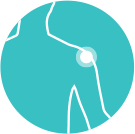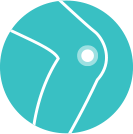Acromioclavicular Joint Injury (ACJ Injury)
Depending on the severity of the Acromioclavicular joint injury (ACJ Injury), the patient may be able to regain complete function of the joint, with non-surgical treatment options such as modified activity, rest and physiotherapy.
However, in some cases, the ACJ injury will require surgical treatment. It is best to have the surgery performed as early as possible, to avoid the injury worsening. The surgery may include the reconstruction of the connecting ligaments and soft tissue, and perhaps the use of a tendon graft to repair/reinforce the ligaments. For more information on the shoulder procedures that Mr Soong Chua performs, please see our Shoulder Procedures Page.
If you have concerns with your shoulder condition, please do not hesitate to book an appointment with Mr. Soong Chua.
What is an AC Joint Injury?
The Acromioclavicular joint is formed by the clavicle and the front of the shoulder blade. An ACJ injury may include a sprain of the soft tissue, or a more severe rupture of the ligaments causing a wide separation between the two bones that form the joint.
What causes an AC Joint Injury?
Acromioclavicular injuries are more likely to occur in males under the age of 35 as a result of a direct blow or fall onto the point of the shoulder. They are commonly seen in cyclists and athletes in high-impact sports such as AFL and rugby.
An ACJ Injury may be caused by:
What are the signs and symptoms of an AC Joint Injury?
ACJ Injury symptoms and signs include:
How is an AC Joint Injury diagnosed?
Depending on the severity of the ACJ injury, Mr. Soong Chua may be able to identify it immediately, because of the physical deformity that this kind of injury can cause.
However, Mr. Soong Chua will perform a full history and physical examination of the shoulder, monitoring the range of movement of the area, and the level and location of the patient’s pain.
In order to confirm the diagnosis, an X-ray may be required. Mr. Soong Chua will make an assessment based on the X-ray, and decide upon a treatment plan.





